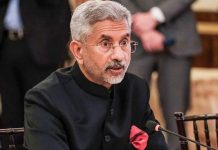When Prime Minister Narendra Modi compared the Goods and Services Tax Bill to Lord Krishna and said that while the GST was ideated by someone, it was made a reality by someone else — a reference to the fact that it had been conceived by the Congress while its passage was overseen by the NDA — he was obviously referring to the biggest tax reform in the country. In Hindu mythology, Krishna is the son of Devaki and was brought up by foster-mother Yashoda. With 443 ‘ayes’, the GST Bill (122nd amendment) has been rolled out of Lok Sabha while it has already been passed by the Rajya Sabha. It will now have to be ratified by a majority of 29 state Assemblies.
With this, the Centre has cleared a major roadblock and is getting closer towards making GST a reality. The GST is a tax reform that has been on the cards for more than a decade. In the current tax regime, states tax sale of goods but not services. The Centre taxes manufacturing and services but not wholesale and retail trade. The GST, by bringing all indirect taxes under one roof, will simplify tax administration, leading to foolproof compliance. As a consequence, it will eliminate economic disparities in production, trade and consumption. it will actually cut down production costs to make exports more competitive. The GST, even in the diluted version that has been proposed now, would widen the tax base and bring in parity for both the Centre and the States. That is because, unlike, excise duty, the GST is paid only by the final consumer. In other words, the GST, like all indirect taxes, is a tax on consumption which would seek to bring about a uniform rate on all forms of consumption: it would tighten the tax net and widen it.
The biggest indirect tax reform since Independence, the GST Bill is expected to bring about an economic integration of the Indian economy. Little doubt that the country’s small-scale manufacturing units are eagerly awaiting for this piece of legislation that would be a game-changer for SMEs. Currently, if we add up all the taxes paid by the manufacturing firms, it almost comes up to 25 percent. After GST implementation, it will slide to about 18 percent, bringing great relief to these companies.
Politics over GST
Former finance minister P Chidambaram has been quick to comment, “Good Sense Triumphs,” while TMC MP Derek O’Brien dubbed the GST as “Girgit Samjhauta Tax” as it came after long years of confrontational politics. First mooted by the Vajpayee regime in 2000, the GST remained stuck at the discussion stage for almost 16 years despite an expert committee headed by the well known economist Vijay Kelkar backing it and 160 countries having already implemented it successfully. When in opposition, the BJP did everything to stop its passage and not let the Congress run away with the GST; when out of power, Congress did the same thing. The Congress softened its opposition to the Bill only after the government accepted its demand for dropping the additional one percent inter-state levy meant to compensate manufacturing states including Maharashtra, Tamil Nadu and Gujarat. Manufacturing states stand to lose revenue since the GST tends to shift the point of tax levy from the origin to where the goods or services are to be eventually utilised. The Congress demand for putting a cap at 18 percent GST rate in the Constitutional amendment has also been accepted.
GST may be a reality only by 2017
If all goes well and the GST is rolled out on 1 April 2017 as planned, Prime Minister Narendra Modi and Finance Minister Arun Jaitley will have something concrete to show off as reform. The GST as an indirect tax reform will also save businesses from Inspector Raj. Most goods are sure to become cheaper, but services may cost more in the aftermath of GST. Tax evasion will become difficult. As such the GST is a welcome step though it must be implemented with due caution as it has an inherent risk of turning the states into “glorified municipalities”. All said and done, this is a pathbreaking reform that is being described as a gamechanger for the Indian economy. Basically, it means that most of the existing taxes will be done away with and replaced by a single-point levy. It will remove a huge plethora of paperwork and red-tapism. It is a single tax at the final point of consumption. The fact that India is on the right track can be gauged from the fact that about 160 other countries have adopted the single goods and services tax.
The positives:
♦ It would simplify tax administration
♦ It would improve compliance
♦ It would remove multiple taxation
♦ It would create a single market
♦ It would tax goods and services at the same rates
♦ It would reduce taxes on manufactures
♦ It would make business more competitive
♦ It would eliminate evasion
The glitches:
♦ Tax on services may be up substantially from 14 percent to 20 percent
♦ Tax on retails would almost double
♦ Imported goods would be taxed at higher rate by around 6 percent
♦ Online GST Network may be difficult for small business to follow
♦ States may lose autonomy to change their tax rates.
♦ Manufacturing states may lose revenue
♦ Service sector will have to register in every state
With the implementation of the GST, the manufacturers will find doing business and compliance hassle-free as they will only pay a single-point tax instead of the numerous levies at each stage of the production process. Then there would be ease of movement throughout the country as goods can be moved from state to state with no tax barriers. Government revenues are expected to increase as simplification is an incentive to pay tax rather than evade or avoid it. Above all, the ease of doing business will improve.
However, on the flip side, the GST in the current form will not achieve the objectives of a single uniform tax as it will not be a single tax as originally envisaged because of pressure from state governments. If there is a central tax, a state tax and a third inter-state tax and key taxable items like alcohol and petroleum products are kept out of the purview of GST, it would not serve the whole purpose. These products are seen as huge cash cows for the Centre and states, so GST may not be applicable to them. Also, the stated aim of keeping the tax rate at 18 percent, looks like a distant dream as yet. No wonder lobbying has already begun to mobilise support for a lower GST. This is despite expert reports that show 18 percent as a revenue-neutral rate.
In other words, at this rate the same revenue will be raised as in the past if applied to all goods and services. Right now we can only say that the GST Bill is coming as the most significant economic reform since Independence!
letters@tehelka.com














